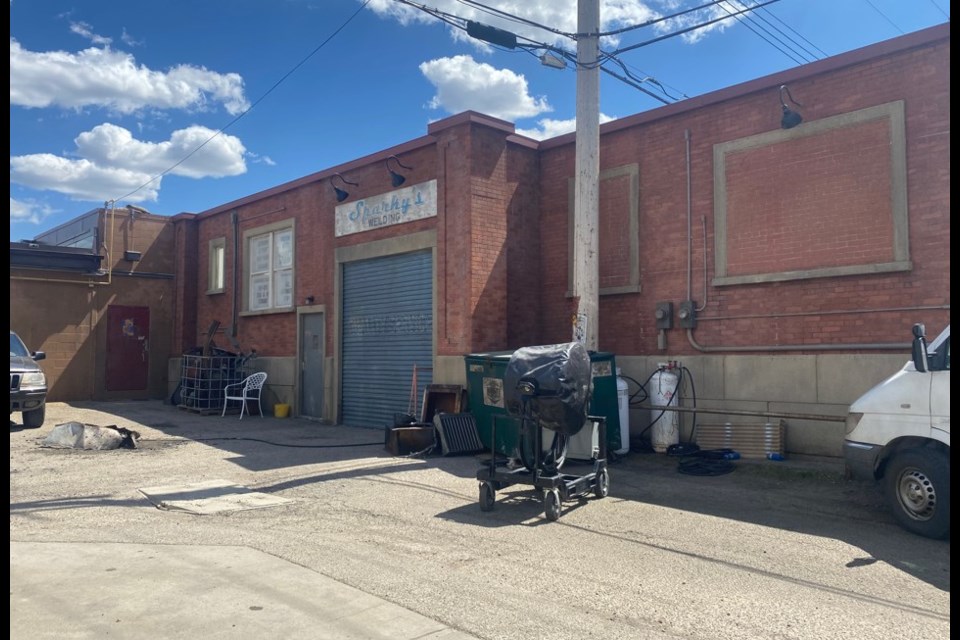OLDS - The amount spent on the filming of HBO’s The Last of Us in Alberta made it the largest series ever filmed in Canada, a new report has found, with Olds-area businesses sharing in the spin-off economic activity.
Results from a study commissioned by the Motion Picture Association – Canada (MPA) analyzed the production’s total economic impacts in Alberta from July 2021 to June 2022, when the first season of the show was filmed.
Over $141 million was spent across the province shooting the first season of the TV series adaptation of a video game starring Pedro Pascal and Bella Ramsey, the study released Monday noted.
“The Last of Us, the largest series ever filmed in Canada, has left an indelible mark on Alberta’s economic landscape,” highlighted Matt Jones, minister of Alberta Jobs, Economy and Trade in a news release about the study. “Supported by Alberta’s Film and Television Tax Credit, this monumental production not only showcased the breathtaking facets of our province but also emphasized why Alberta, with over 180 diverse filming locations, is a world-class destination for large-scale film and television productions.”
Spending on wages and salaries for local production crew and other labour made up slightly over half of the expenditure at over $71 million, the report’s author, Oxford Economics, found.
The other half of spending was with local suppliers of goods and services at approximately $70 million.
The Last of Us was filmed in more than 180 locations across Alberta.
Production crews began arriving in Olds in late May 2022 with filming taking place on a portion of 51st Street and in an adjacent back alley May 31 and June 1.
The facades of several 51st Street businesses were transformed into a Texas setting, including a bank and a furniture store. Buildings along an adjacent back alley were painted to fit the scene's setting and a temporary building facade was also built in the back alley. Steve Hornung of Vancouver was brought in to paint murals on two of the buildings, one of which remains today.
Electrical, moving and sign-making companies were among the Olds businesses the production patronized for its work in town.
Olds Sign Shop was hired to remove existing decals from businesses in the area of the shoot, create new ones for the filming, then remove them and replace them with decals for the existing businesses.
Owner Derrald Ulry estimated that all that resulted in about 18 hours of work for his business.
In an interview with the Albertan at the time of filming, Ulry says he got a call about the work about two weeks before it began.
“They called me and asked me if I’d be interested and I said I would be. Then I met with the guy and went over everything. And then he sent me an email with the project that I had to do,” Ulry said.
He said representatives of the company were easy to work with.
“They were accommodating and they had everything explained quite well – what I had to do,” he said.
Jeremy Tookey of Olds Electric & Lighting said his company was contracted to take signs down and re-install them after the shoot was completed.
Although it didn’t create a massive boost for his business, Tookey said the filming was good for the community.
“I would say that there will be a spike in the hotel and restaurants lines,” he wrote in an email in response to questions by the Albertan at the time of filming.
Willow Lane Barn east of Olds was used as a setting for the series as well.
From lumber and construction supplies to hotels, local catering and more, the series supported over 1,000 Alberta businesses in communities across the province, the study found.
The cities that received the largest amounts in business spending were Calgary and Edmonton, which together made up over 80 per cent of all business spending, the study noted.
It was also noted that the production of TV shows typically relies on a wide range of goods and services, engaging multiple local businesses across numerous industries. The largest category of spending at over $20 million was in health care and went towards COVID-19 related services, such as testing.
The next largest category of spending at just under $15 million went towards production-related services, the study found. This included spending with production facilities and the design and building of production sets.
Over $4 million was spent on procuring the raw materials required to build sets and other large-scale purchases to support the production. Another $3 million went to administrative and support services, such as cleaning and security services, and other facilities support.
Other large categories of spending include rental and leasing services, accommodation and food services, and construction services.
Overall, the show generated more than $182 million for Alberta’s gross domestic product and stimulated a total of 1,490 jobs across the province, Oxford’s analysis found.
- With files from Doug Collie



